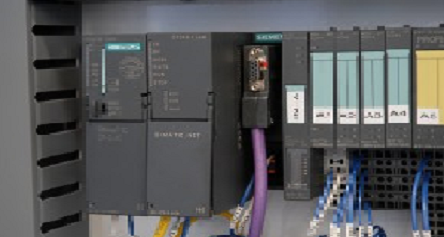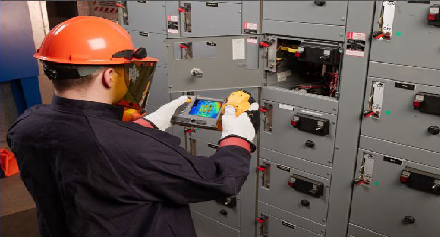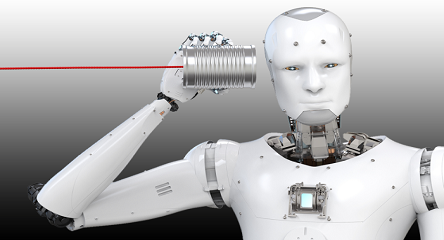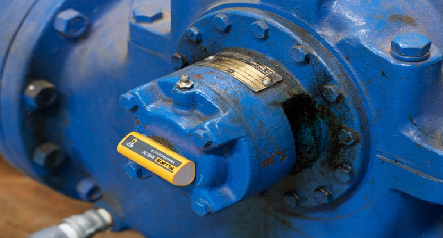Condition monitoring is a bit like going to the doctor. Doctors may look at your electrocardiogram, blood sample results, blood pressure and temperature. These tests are just a few of many examination techniques available to them, some more complex than others. So why are they done? Simply because each of them tells a story. For example, a blood test can be used to: assess your general state of health; check if you have an infection; see how well certain organs such as the liver and kidneys are working; screen for certain genetic conditions.
Would you really wait for the flat line on your electrocardiogram before you decide to do something about it? Of course not! Running to fail is not part of the human mindset because we consider our body critical to our survival and to us reaching a fair old age. Yet we push our bodies to their limits and sometimes even go way past these recommended limits. For example, athletes take their body beyond what we would normally consider an acceptable limit. To enable this they train hard regularly, monitor their performance, adjust their diet, adapt their sleeping pattern to match the demand on their body and ensure they are at their best on the day.
Similar to the assets in a factory, it is important to understand which is the critical one, the irreplaceable one, the dangerous one or just the one that gives you regular pain. Once these are known, it then becomes easier to extrapolate a plan to maintain, monitor, or even improve them if required. Like a coach training athletes for participation in the Olympic Games, condition monitoring is similar by pushing your critical equipment to get the very best out of it, often to go beyond its predefined useful life, exceeding design parameters and help produce more when required.
The key to a successful monitoring program is to understand which techniques are better used to detect specific failure modes. Vibration on its own will not identify all the potential failure modes of an asset, it is therefore important to understand the correct techniques to deploy.
For example:
- Imbalance (couple, static, dynamic and overhung)
- Bent shaft
- Resonance
- Parallel, angular or complex misalignment
- Impact
- Cocked bearing
- Structural or rotating looseness
- Blade or vane pass issues
- Soft foot
- Cavitation
- Lack of lubrication
- Gear misalignment
- Gear backlash/eccentricity
- Gear broken tooth/tooth wear
- Bearing stage 2, 3 or 4
More importantly, being able to define the relationship between the techniques is probably even more crucial. The skill lies in the ability to look for patterns and trends in all the key parameters deployed on assets by utilising a range of monitoring techniques suited to understand the behaviour of equipment. Looking for the links (cause and effects) between the techniques deployed will confirm the failure mode, like how a doctor would look for a change within the body as a sign of sickness, infection or organ defect. Specialist skill sets and tools such as motion amplification, multi-channel data analyser or strain gauging equipment will monitor and assess equipment leading enabling the troubleshooting of a specific failure.
In recent years being able to self-monitor our health is becoming more popular, with anyone from professional athletes to those with little sporting experiencing investing in tools such as smart watches to allow them to monitor their steps, heart rate, sleep and exercise. Enabling us to track our health and be aware of any changes. This information is then passed onto our doctors, along with any physically symptoms to help make a more informed diagnosis. Machine Sentry® is the asset equivalent of a smart watch, allowing maintenance professionals to self-monitor their site assets.
For assets that don’t run regularly, or are difficult to access (behind guards, too high to reach or in restricted area) there are solutions to match that requirement. The Machine Sentry® Fixed Sensor MSF-01 is a wireless sensor designed to get over these barriers. With a five-year battery life, tri-axis vibration readings collected every hour, the MSF-01 sensor is packed with high end, up to date technology that will revolutionise your condition monitoring program.
What’s more, you can still combine routine data collection with the MSM-1 for lesser critical assets or use the MSO-1 solution for real critical assets. All the data from these solutions can be gathered into one platform making it easy to get a full holistic asset overview. It really couldn’t be simpler.
All the information gathered by Machine Sentry® hardware is then uploaded to the online Machine Sentry® database. Machine Sentry® is the ‘medical dictionary’ of critical assets, detailing the experiences and diagnoses of equipment health studied over 40 years. It is improving constantly as new machines are added to the database daily. With over 10 million readings, Machine Sentry® has been deployed to over 300 customers, 1,000 sites with over 100,000 assets being monitored, analysed and tracked regularly. Combining the data and knowledge collated, an Automated Diagnostic Assistant (ADA™) has been developed to guide you through the most common failure modes previously highlighted. As part of this, effective remedial steps are provided to ensure that assets remain healthy (like a doctor’s prescription). Making the requirement for expert diagnosis limited to the exception when you actually require it.
When expert advice is needed, AVT Reliability® can provide recommendations (doctors note) to either nurse your asset to a controlled shutdown, maintain its useful life by adapting its operating parameters (training, or diet), or plan for an effective repair (operating table) for a full refurbishment, or replacement. In some cases, and like real athletes it is also possible to recommend improvements (performance enhancing drugs) which can boost the performance of that asset. This is where you can adjust your maintenance plan and reduce time-based maintenance activity by considering the actual needs of your assets.
At AVT Reliability®, we want our customers to deploy condition monitoring programs to more assets than the traditional 10% critical assets. Condition monitoring can add so much more value to a maintenance strategy. The Machine Sentry® hardware and software solution was developed to be easy to deploy and use. Those using Machine Sentry® can typically deploy their condition monitoring 3 to 5 times faster, or cover 10 to 20% more assets, more cost effectively. Furthermore, a study by Oneserve in partnership with British manufacturers showed that downtime costs UK manufacturers £180bn a year. With that in mind, why would you not want to save money and enable your valuable resource to have more time to take care of your assets.







Favor indicarme enlace webinarios en idioma español.
Muchas gracias.